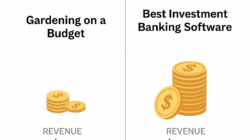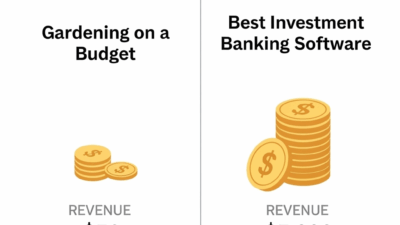In today’s data-driven world, retrieving information quickly and efficiently is critical for businesses, organizations, and individuals. A high query database is a specialized system designed to handle a large volume of queries or requests for data in real time, ensuring optimal performance even under heavy loads. Whether you’re running an e-commerce platform, a financial application, or a social media network, understanding how high query databases work and how to optimize them can make all the difference in delivering a seamless user experience. This article will dive deep into high query databases, exploring their importance, how they function, and the best practices for managing them effectively.
What is a High Query Database?
A high query database is a system optimized to handle many read and write operations simultaneously. Unlike traditional databases, which may struggle under heavy workloads, high query databases are designed to process thousands or even millions of queries per second without compromising performance. These databases are essential for applications that require real-time data access, such as online gaming, stock trading platforms, and large-scale e-commerce sites.
The primary goal of a high query database is to minimize latency and maximize throughput. Latency refers to the time it takes for a query to be processed and the results to be returned. In contrast, throughput refers to the number of queries the database can handle within a given time frame. By optimizing latency and throughput, high query databases ensure that users can access the data they need quickly and reliably.
Why Are High Query Databases Important?
In the digital age, speed and efficiency are paramount. Users expect instant access to information, and any delay can lead to frustration, lost revenue, or even a damaged reputation. High query databases are crucial in meeting these expectations by enabling fast and reliable data retrieval.
For example, consider an e-commerce website during a major sales event. Thousands of users may browse products, add items to their carts, and complete purchases simultaneously. Suppose the database cannot handle the high volume of queries. In that case, the website may slow down or crash, resulting in lost sales and unhappy customers. A high query database ensures the website remains responsive and functional, even during peak traffic.

Key Features of High Query Databases
High query databases have several features that set them apart from traditional databases. These features are designed to enhance performance, scalability, and reliability.
1. Indexing: Indexing is a technique for speeding up data retrieval by creating a data structure that allows faster searches. In a high query database, indexes are optimized to handle large volumes of queries efficiently.
2. Caching involves storing frequently accessed data in memory so that it can be retrieved quickly without querying the database. This reduces latency and improves overall performance.
3. Sharding: Sharding distributes data across multiple servers to balance the load and improve scalability. Each server, or shard, contains a subset of the data, allowing the database to handle more queries simultaneously.
4. Replication: Replication involves creating database copies on multiple servers. This ensures that if one server fails, the others can continue to handle queries, improving reliability and fault tolerance.
5. Load Balancing: Load balancing distributes incoming queries across multiple servers to prevent any single server from becoming overwhelmed. This helps maintain consistent performance even under heavy loads.
Types of High Query Databases
Several high query databases are designed to meet specific needs and use cases. Understanding the differences between these types can help you choose the proper database for your application.
1. Relational Databases: Relational databases, such as MySQL and PostgreSQL, are structured databases that store data using tables. They are ideal for applications that require complex queries and transactions.
2. NoSQL Databases: NoSQL databases, such as MongoDB and Cassandra, are designed to handle unstructured or semi-structured data. They are highly scalable and can handle large volumes of queries, making them ideal for big data applications.
3. In-Memory Databases: In-memory databases, such as Redis and Memcached, store data in memory rather than on disk. This allows for high-speed data retrieval, making them ideal for real-time processing applications.
4. Columnar Databases: Columnar databases, such as Amazon Redshift and Google BigQuery, store data in columns rather than rows. This allows for faster query performance, especially for analytical queries.
How High Query Databases Handle Large Volumes of Data
Handling large volumes of data is one of the biggest challenges for any database system. High query databases use a combination of techniques to manage this challenge effectively.
1. Partitioning: Partitioning involves dividing an extensive database into smaller, more manageable pieces. Each partition can be stored on a separate server, allowing the database to handle more queries simultaneously.
2. Compression: Compression reduces the size of the data stored in the database, allowing for faster data retrieval and reduced storage costs.
3. Parallel Processing: Parallel processing involves dividing a query into smaller tasks that multiple servers can process simultaneously. This reduces the time it takes to complete the query and improves overall performance.

Best Practices for Optimizing High Query Databases
Optimizing a high query database requires combining technical expertise and strategic planning. Here are some best practices to help you get the most out of your database.
1. Monitor Performance: Regularly monitor your database’s performance to identify bottlenecks or issues. Use tools like query analyzers and performance dashboards to track key metrics.
2. Optimize Queries: Write efficient queries that minimize data processing and returning. Avoid using complex joins or subqueries unless necessary.
3. Use Indexes Wisely: Create indexes on columns frequently used in queries. However, avoid over-indexing, as this can slow down write operations.
4. Implement Caching: Use caching to store frequently accessed data in memory, reducing the need to query the database repeatedly.
5. Scale Horizontally: To handle increased loads, distribute your database across multiple servers. Use sharding and replication to improve scalability and reliability.
Challenges of Managing High Query Databases
While high query databases offer many benefits, they also come with their own set of challenges.
1. Complexity: Managing a high query database can be complex, requiring specialized knowledge and skills.
2. Cost: High query databases can be expensive to implement and maintain, especially if they require specialized hardware or software.
3. Security: Ensuring the security of a high query database is critical, as it often contains sensitive or confidential information.
Future Trends in High Query Databases
As technology continues to evolve, so too do high query databases. Here are some trends to watch in the coming years.
1. Cloud-Based Databases: Cloud-based databases are becoming increasingly popular, offering scalability, flexibility, and cost savings.
2. AI and Machine Learning: AI and machine learning are integrated into high query databases to optimize performance and predict future trends.
3. Edge Computing: Edge computing involves processing data closer to the source, reducing latency, and improving performance for high query databases.
Conclusion
High query databases are the backbone of modern applications, enabling fast and efficient data retrieval even under heavy loads. By understanding how these databases work and implementing best practices for optimization, you can ensure that your application remains responsive and reliable, no matter how many users or queries it handles. As technology advances, high query databases will play an increasingly important role in shaping the future of data-driven innovation.







